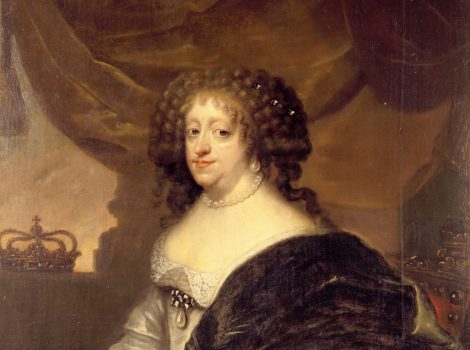Queen Sophie Amalie with the Third Arm
What does a conservator do when unexpected things pop up during work on the paintings?
This was the question paintings conservator Berit Møller posed herself, when she during the cleaning process removed thick yellowed varnish and discoloured retouching and suddenly discovered that Queen Sophie Amalie had three arms. Investigations showed that all three arms were painted by the same painter. The painting is attributed to Juriaen Ovens (ca. 1613 – 1678).
The painting was bought by the Royal Danish Collection and was to be restored for a temporary exhibition. Time was short and the task substantial.
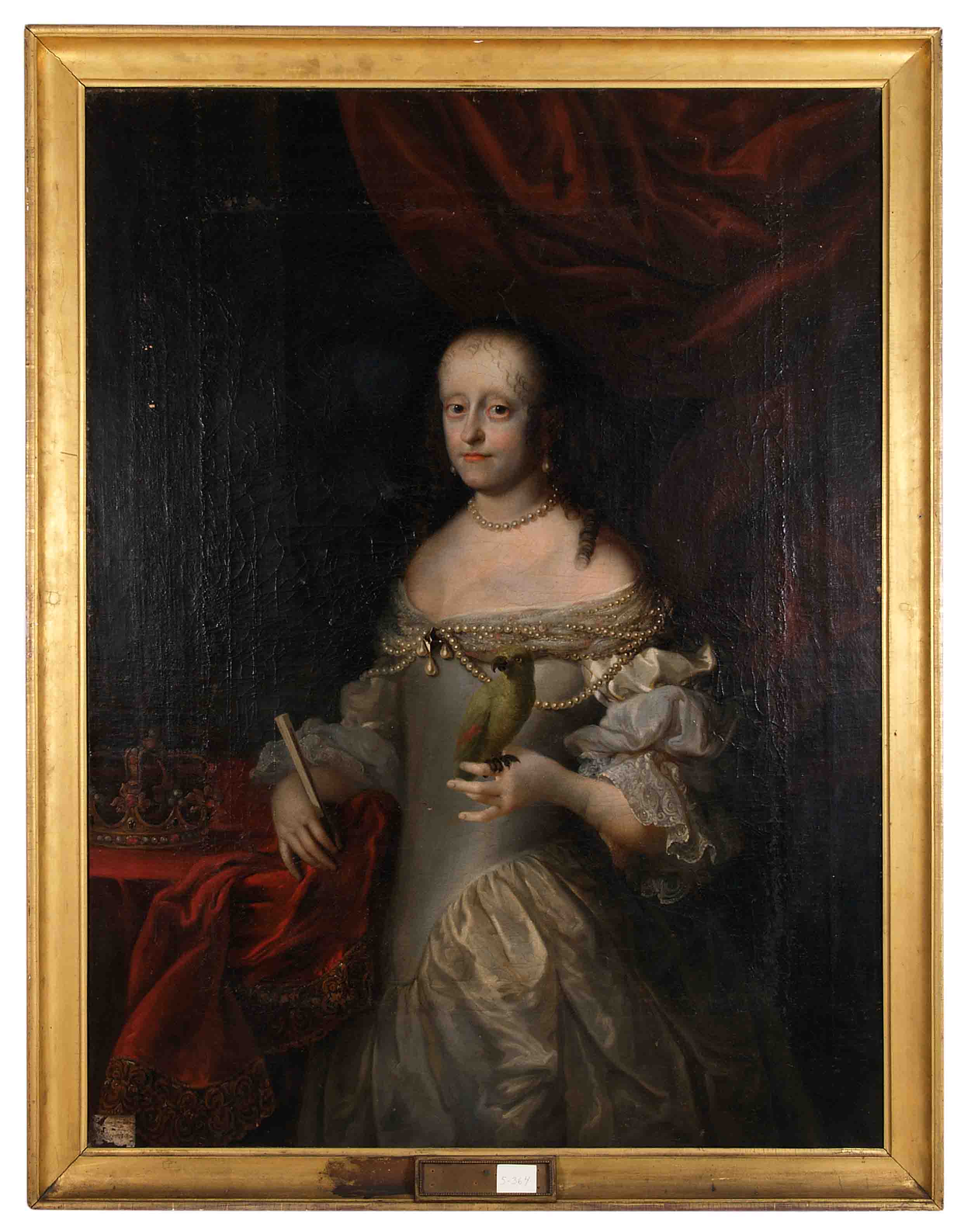
The painting as it looked on arrival at Rosenborg: The pigment layers displayed a high degree of craquelure – in many places they were falling off – and the added edges, which make the painting larger than it originally was, were pulling away from the original painting. The varnish was very yellowed and dirty, and the recoating and retouching had become very dark.
Many years previously the painting had been made much bigger with new canvas edges, which had been sewn on all the way around. A larger canvas had then been glued on to the back. The ‘new’ edges were beginning to pull away from the canvas and the layers of pigment were also loose. It was necessary to separate the original painting including the ‘new’ edges from the large canvas, which was in a bad condition, and attach both to a new canvas.
The operation went as expected, the pigment layer was set with glue using a special vacuum treatment on a so-called low pressure table, and a new canvas was stuck to the back of the painting. Because the ‘new’ edges have been attached to the painting for very many years they are considered part of the painting’s cultural history, and they were therefore allowed to remain.
The layer of oil paint on the edges was, however, aged and had become much darker than the original pigment layer. It was clear that a lot of work would be needed to make the two parts fit together.
When a painting is cleaned of old varnish, old retouching and recoating, solvents are used, and it is not unusual that the retouching is easily soluble and disappears together with the yellowed varnish when it is cleaned. This also happened on this occasion. But the retouching was more extensive than had been imagined. It turned out that it concealed a secret: an extra arm.
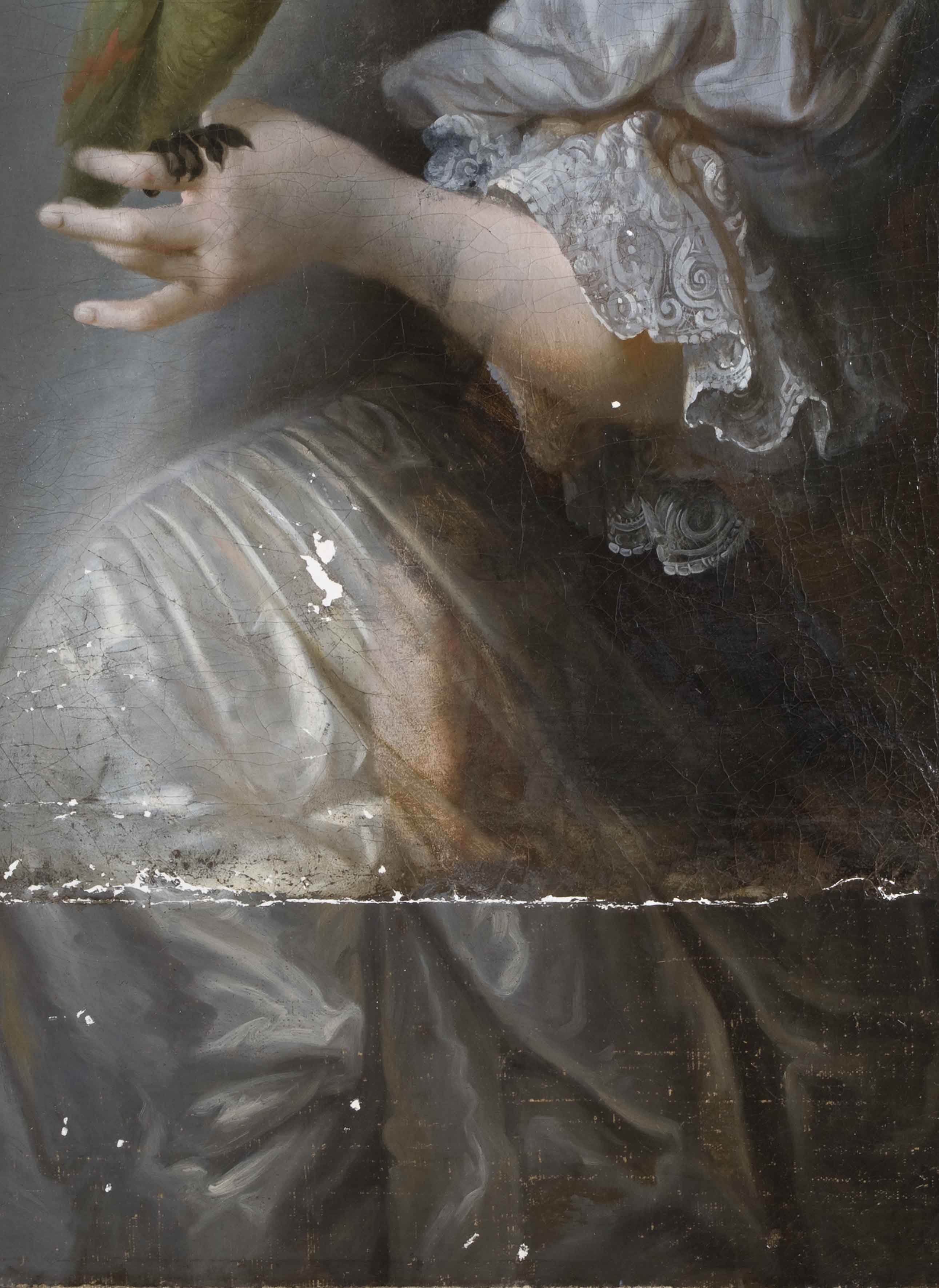
Detail showing the current arm, top. And bottom the first arm. Notice how much darker the dress is under the dangling hand. This is because the oil paint that was used has over time grown darker than the original pigment layer. The dark dress is painted on the new edges which made the painting bigger.
When the painting had been cleaned it could be seen that the right arm, which today holds a parrot, originally dangled down and rested on the silk folds of the dress. If you looked carefully you could sense that the new arm was unusually long and that the Queen’s upper arm, beneath the puff sleeves and lace, was usually long.
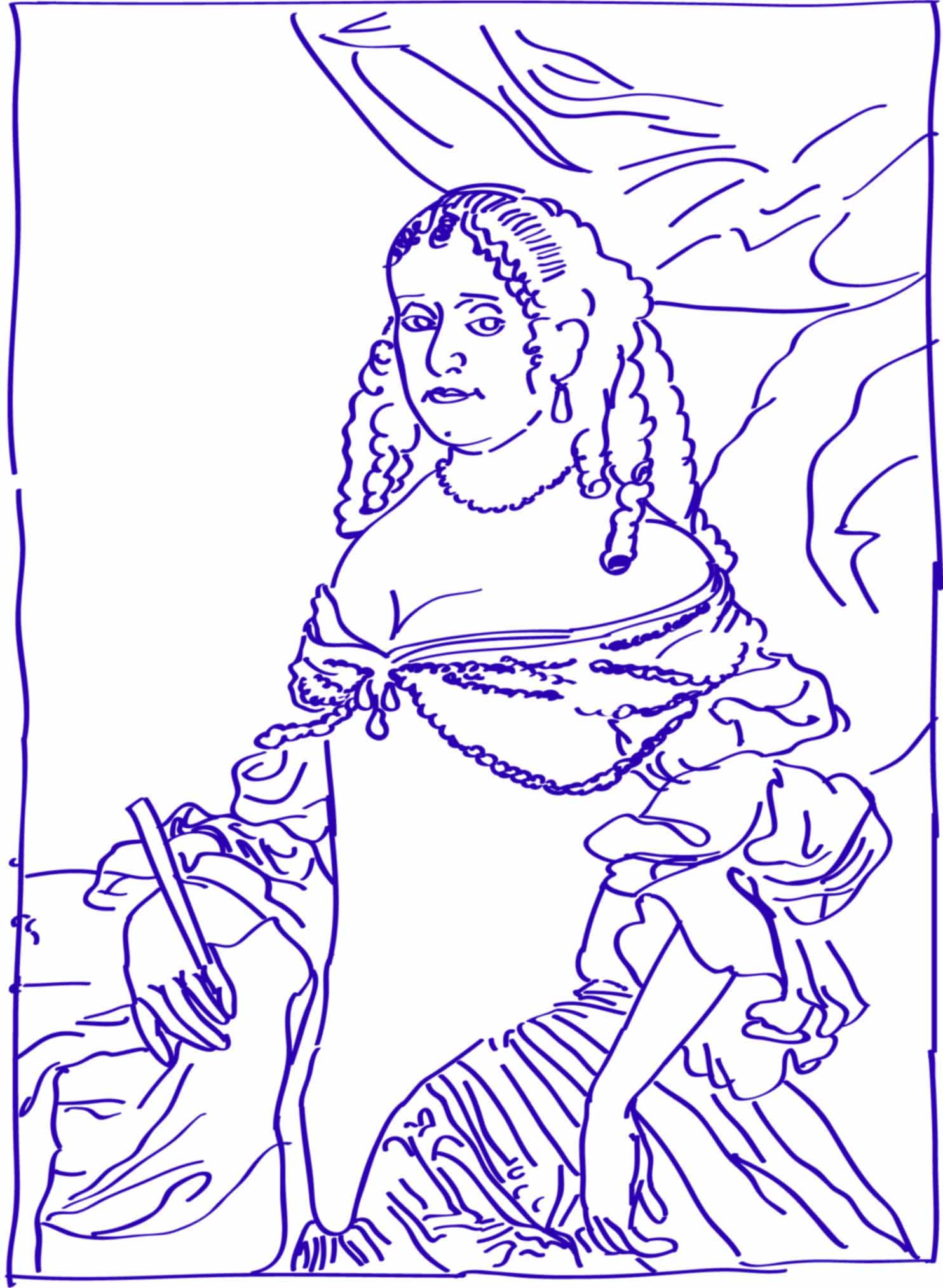
Sketch of the painting’s oldest motif – before the parrot was added and before the new edges were added.
But why was the arm altered? The arm does not stem from the time when the canvas was made bigger. The colour choices and style of painting were completely different and were like those of the original painting. Therefore the arm had to be considered original. The new arm is a correction of the original picture undertaken by the artist himself. It can be imaged that the Queen voiced a desire to have her pet in the picture and that the correction was therefore necessary.
But why did the old arm appear when the retouching was cleaned off? The conservator found the answer to this question in cleaning damage to the original pigment layer. An earlier treatment had been a little too severe, and the thin layers of repainting with which the painter had originally covered the first arm had been washed away. This probably occurred when the painting was made bigger. That was many years ago and at that time harsh lye solutions were used to clean paintings – often resulting in deep corrosion of the pigment layer.
But to return to the question: What to do in such a situation? The extra arm can be left visible or covered again. Since Queen Sophie Amalie would look rather silly with three arms and it was never the artist’s intention, the decision was taken to cover it with retouching which from a distance blends into the picture, while close up it is clear that the new coating is built up of small strokes. This ensures that it is clear what is original and what was added by the conservator. The dark pigment layer on the edges was therefore also left as it was, and only a narrow edge on the border with the original pigment layer was retouched. In this way, if one looks closely, one can read the painting’s history on the painting itself.
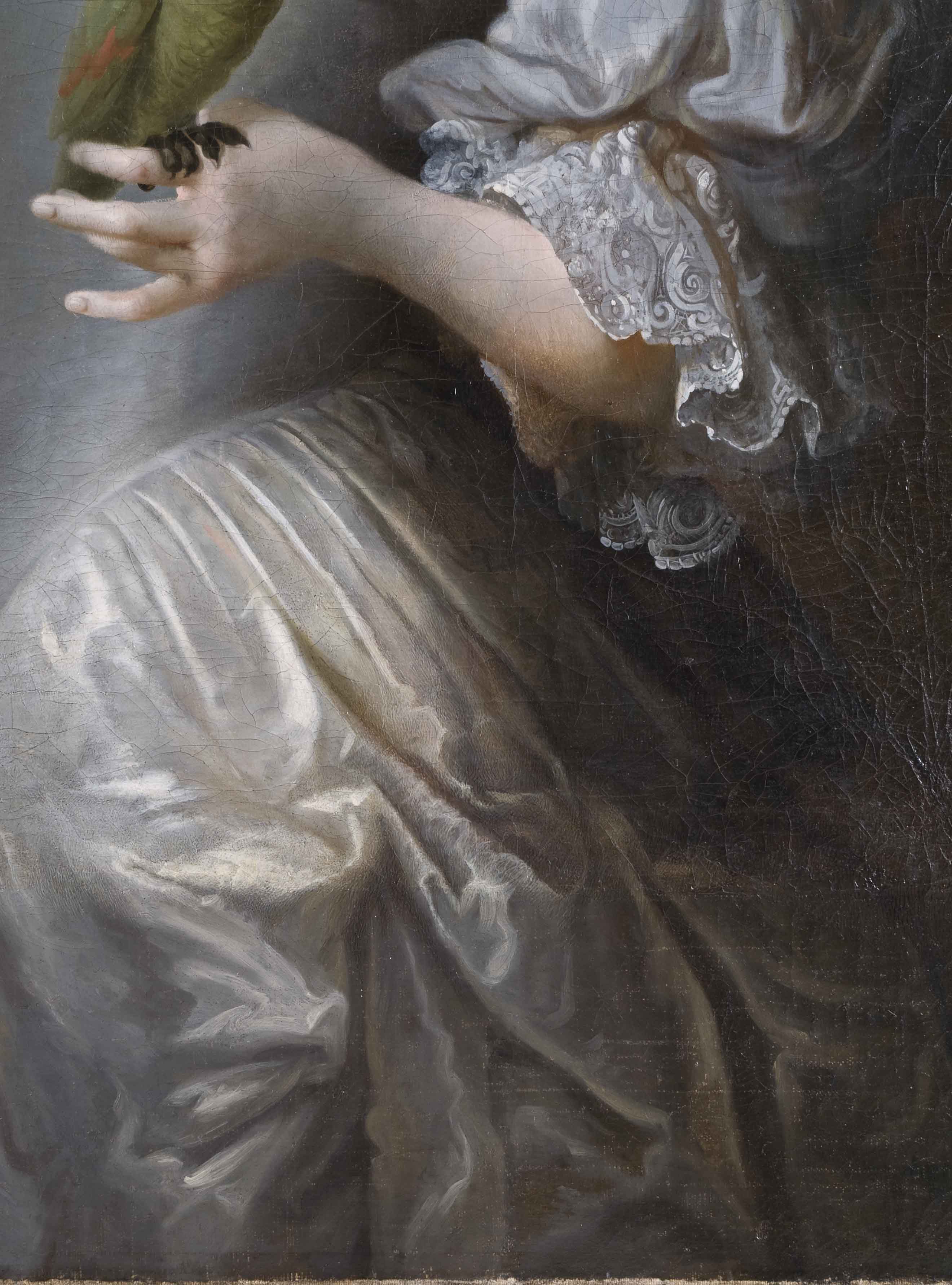
Detail which shows the now covered hand.
In spite of the unanticipated problems the painting was finished on time, so that it could be part of two temporary exhibitions.
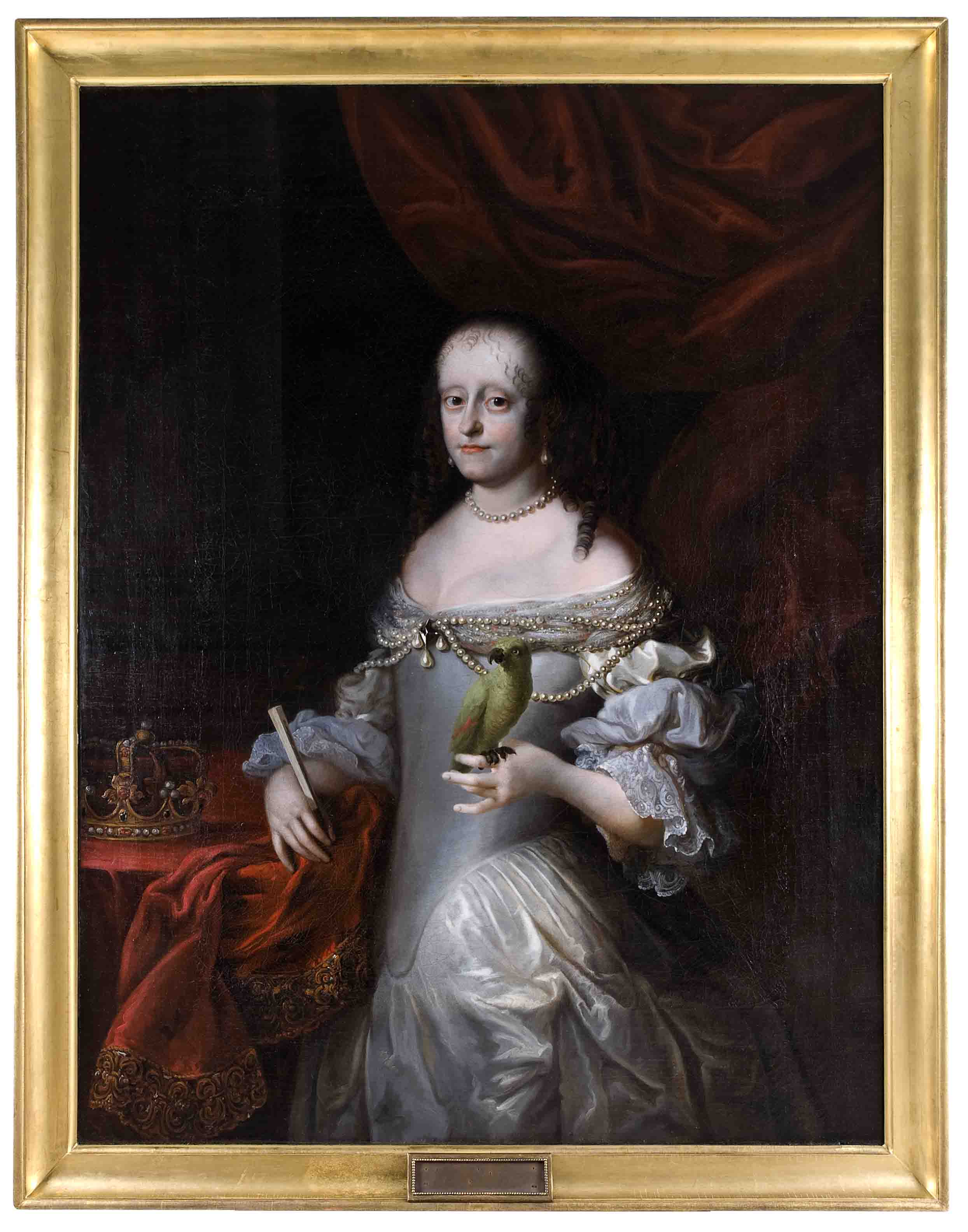
The painting after treatment in the conservator’s studio.

 Dansk
Dansk
 English
English
 Deutsch
Deutsch

